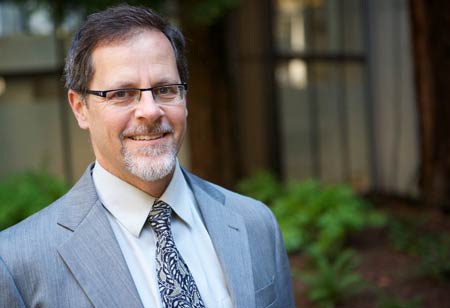

Thank you for Subscribing to Environmental Business Review Weekly Brief

Jeff Caton, a Principal Associate at ESA, leads the firm’s sustainability practice with his extensive experience in planning, engineering, and business management. He excels in developing and managing sustainability and climate change initiatives, and also at aligning sustainability goals with organizational strategy. Jeff has successfully developed Climate Action Plans and Sustainability Master Plans, and has comprehensive experience in greenhouse gas emissions management. His work contributes to healthier air, water, and communities.
Across the industry, what trends have you noticed when it comes to sustainability initiatives, and what challenges does this pose for clients? We are observing a shift in sustainability goals towards science-based targets for reducing greenhouse gas emissions. The focus is moving away from simply claiming carbon neutrality through offsets, and instead, we’re adopting a more rigorous, standards-based approach to achieving net-zero emissions. The Science Based Targets Initiative (SBTi) has introduced net-zero standards, which we are applying to our clients’ goals and sustainability efforts. This standard presents a challenge as it requires significant reductions in greenhouse gas emissions by organizations across their entire value chains, targeting 50% in real reductions by about 2030 and achieving “net zero” emissions by 2050 with minimal use of offsets. Meeting these targets is proving to be difficult due to the need for extensive analysis to determine feasible methods for reducing emissions to the required extent. That leads to considerations of indirect emissions associated with supply chains and other activities over which an organization may have limited control. What is a recent example of a sustainability initiative that you have been directly involved in? One such initiative is for challenges faced by our transportation clients, who own large fleets of heavy-duty vehicles, in achieving their greenhouse gas reductiongoals. They havelimited options for decarbonizing these vehicles in the near term, despite ongoing research and development by state and federal government programs. “Businesses have moved beyond the era of setting aspirational goals and making broad commitments to sustainability. The focus has now shifted to setting and tracking quantitative targets, such as reducing water use, greenhouse gas emissions, and waste.” The cost of achieving zero emissions for large trucks is high, and for many of these clients there is no clear path to meeting science-based targets when a significant portion of their emissions comes from these sources. In this particular case, the majority of these emissions comes from a vast network ofsuppliers andpartners, making it even harder to develop a feasible path to meeting their reduction targets. What challenges have emerged in your business or industry, and how have they impacted the effectiveness of your current services? Businesses have moved beyond the era of setting aspirational goals and making broad commitments to sustainability. The focus has now shifted to setting and tracking quantitative targets, such as reducing water use, greenhouse gas emissions, and waste. However, achieving these targets is not easy. It requires significant technological and policy transformations at the national and state levels, which are happening but not quickly enough to meet global needs, particularly in the area of greenhouse gas emissions. The state of California is implementing various policy measures and programs, and funding resources that are crucial at this stage. The federal government’s Inflation Reduction Act is providing a lot of grant money towards planning and implementation of GHG reduction programs, which is hoped to make a difference. However, the real challenge lies in developing plans that can be effectively implemented over the near term to make real progress towards science-based targets. What would be your piece of advice for your fellow peers and colleagues? I would place a strong emphasis on continuous education to stay abreast of the latest policies and technologies. I would also advocate for setting realistic goals for clients and ensuring that strategies and policy recommendations are based on realistic assumptions and available technologies. I acknowledge that the industry is transitioning towards decision-making based on scientific principles, but this comes with its own complexities. For instance, the ban on natural gas infrastructure in Berkeley, California, which was subsequently overturned by the courts, places a real obstacle to local governments in their efforts to eliminate community use of fossil fuels, which is something science tells us we must do in the next few decades. Monitoring such developments is crucial as they have significant implications for climate action plans and client strategies. If such bans on natural gas infrastructureare not feasible, planners mustexplorealternative approaches that don’t rely on regulation, such as rebates and incentives. How do you see the future of the industry in the next 12-24 months, especially when it comes to emerging AI technologies? Earlier this year, I attended a conference on green technology and noticed a surge in interest and investment in this field, reminiscent of the dot-com boom of the 1990s. While there are many promises about the potential of AI, particularly in tracking corporate ambitions, it’s clear that much of this technology is still under development. I am excited about the potential of these technologies but acknowledge that it’s still early days and the future impact is uncertain. I am a strong believer in the crucial role of technology in achieving global sustainability goals and am interested in observing how these technologies will be implemented at all scales - locally, nationally, and internationally. Essentially, I am looking forward to the role of AI in this scenario, and the importance of technology in achieving sustainability goals.